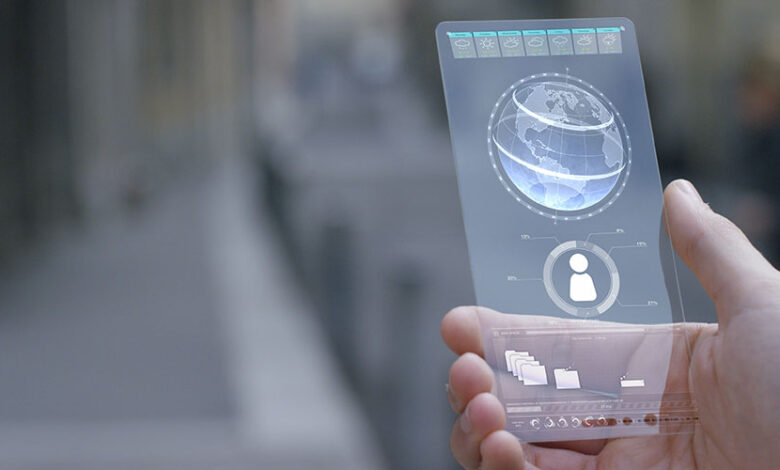Mobile Technology’s Future: What to Expect in the Upcoming Five Years

Mobile Technology’s Future: What to Expect in the Upcoming Five Years
Mobile technology is at the vanguard of a world where technology is advancing at an exponential rate, altering daily life and pushing the boundaries of what is possible.
Imagine a world in which your smartphone can connect to the internet at previously unimaginable speeds, foldable screens can transform into tablets in the palm of your hand, and your gadget protects your digital life with impenetrable but unseen walls of data. This is the reality we will be entering over the next five years, not the screenplay for a science fiction film.
The excitement about how these revolutionary developments will impact the business, banking, health, and travel sectors is evident as we stand on the cusp of these breakthroughs. In the future of mobile technology, we may expect incredible accuracy in safeguarding our digital footprint, more connection, and seamless integration of AR and VR into our everyday tasks—all thanks to the introduction of 5G and beyond.
Explore the newest trends by delving into this article, and then be ready to maximize your mobile experience by utilizing the most recent GSM network technology and compatible SIM cards.
The Development of Flexible and Foldable Phones
A new age in mobile technology has begun with the introduction of foldable and flexible phones, which have generated enthusiasm about the possibility of creating gadgets that combine the large screen size of a tablet with the portability of a smartphone.
While breaking new ground, current models like Huawei’s Mate X and Samsung’s Galaxy Z Fold series showcase the potential as well as drawbacks including expensive prices, dubious sturdiness, and worries about the lifespan of folding mechanisms. These gadgets have captured the interest of both customers and tech enthusiasts despite these difficulties.
Future developments in foldable technology should be able to rectify these early drawbacks. It is anticipated that developments in materials science will result in stronger, more resilient hinges and screens that can be folded thousands of times without breaking. It’s anticipated that battery technology will advance as well, with new materials and designs that increase lifespan and accommodate the unusual shape of foldable phones. Furthermore, advances in screen technology promise brighter, sharper screens that are flexible without sacrificing quality.
It’s expected to have a big effect on customer behavior. It is anticipated that the ease of use of a gadget that folds up to reveal a tablet-sized screen would significantly alter usage habits.
Improved Security Mechanisms for Mobile Devices The significance of safeguarding confidential personal and professional information is increasing in tandem with our dependence on mobile devices. The next generation of fingerprint and face recognition technologies, which provide higher accuracy and speed and make unwanted access more difficult, are at the forefront of biometric breakthroughs. These developments aim to provide a seamless, secure user experience that improves usefulness rather than hinders it. They are not only about locking down devices.
Blockchain technology, which provides a decentralized method of safe transactions and data storage, is increasingly finding its way into smartphone security. Mobile devices can attain a greater level of security and privacy by utilizing blockchain, which offers an immutable, visible log of transactions and data transfers that guards against fraud and hacking.
With the advancement of real-time threat detection systems and predictive analytics, artificial intelligence is playing an increasingly important role in security. Artificial Intelligence (AI) has the capability to examine behavioral patterns and predict future security risks, providing preemptive defense against malware, phishing scams, and other online dangers. This layer of knowledge is essential for responding to the always changing threats to digital security.
AR and VR’s Emergence in Mobile Technology
Virtual reality (VR) and augmented reality (AR) are revolutionizing mobile experiences by making their way from specialized uses to general use in industries including entertainment, real estate, healthcare, and education. Virtual reality (VR) offers immersive travel experiences that can be enjoyed from the comfort of one’s home, while augmented reality (AR) is already improving medical care through virtual consultations and procedures.
Prospective advancements in augmented reality and virtual reality technologies provide even more captivating experiences with useful applications that surpass present-day usage. AR and VR in education may offer immersive, interactive learning environments that mimic real-world situations, increasing the effectiveness and engagement of learning.
Finance and Mobile Payments
The development of mobile wallets is driving a radical change in the mobile payments and financial scene. Around the world, customers are moving away from traditional cash and card transactions and toward the ease and security of mobile payments. The increasing number of people using smartphones and the growing range of financial services available on mobile devices are supporting this trend.
As digital currencies become more widely accepted, there is a convergence occurring between cryptocurrency and mobile transactions. Their incorporation into mobile payment systems creates novel opportunities for safe, decentralized transactions while also adding a new level of ease.
Applications for Health and Well-Being
In the field of wellness and health, mobile technology is turning into a vital tool. The incorporation of wearable technology is improving the way people monitor their health since wearables and mobile devices provide real-time data on vital signs, sleep habits, and physical activity. The gadgets are working together to make health monitoring more user-friendly and accessible.
Meanwhile, the growth of telehealth is transforming patient access to medical services by enabling remote consultations with medical professionals. This improves healthcare’s accessibility and adaptability to meet the demands of a wide range of communities.





One Comment